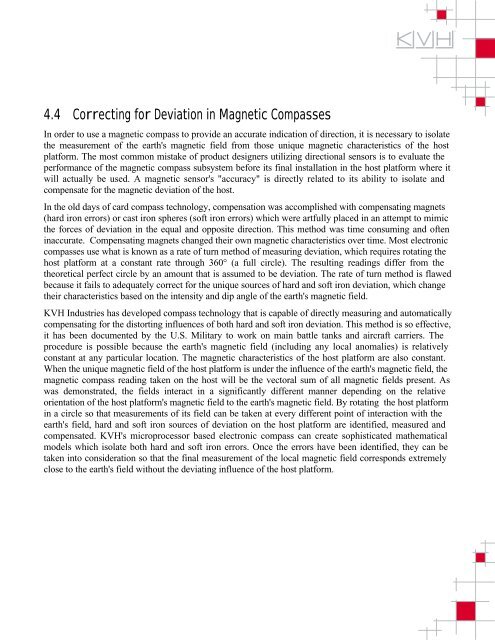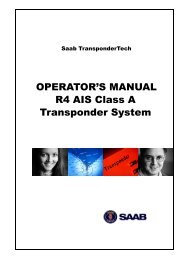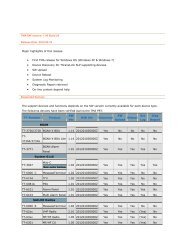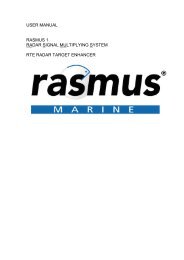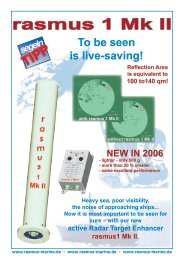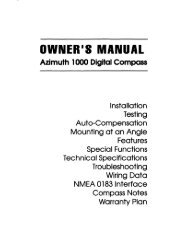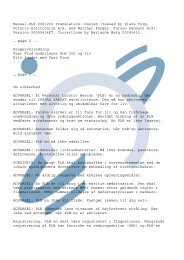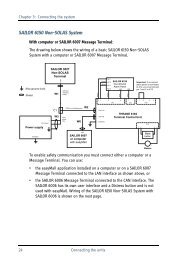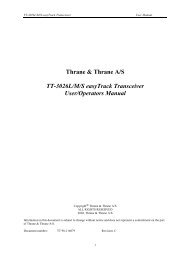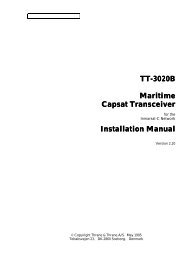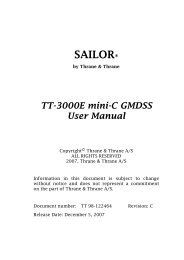Overview of Compass Technology - KVH Industries, Inc
Overview of Compass Technology - KVH Industries, Inc
Overview of Compass Technology - KVH Industries, Inc
You also want an ePaper? Increase the reach of your titles
YUMPU automatically turns print PDFs into web optimized ePapers that Google loves.
4.4 Correcting for Deviation in Magnetic <strong>Compass</strong>es<br />
In order to use a magnetic compass to provide an accurate indication <strong>of</strong> direction, it is necessary to isolate<br />
the measurement <strong>of</strong> the earth's magnetic field from those unique magnetic characteristics <strong>of</strong> the host<br />
platform. The most common mistake <strong>of</strong> product designers utilizing directional sensors is to evaluate the<br />
performance <strong>of</strong> the magnetic compass subsystem before its final installation in the host platform where it<br />
will actually be used. A magnetic sensor's "accuracy" is directly related to its ability to isolate and<br />
compensate for the magnetic deviation <strong>of</strong> the host.<br />
In the old days <strong>of</strong> card compass technology, compensation was accomplished with compensating magnets<br />
(hard iron errors) or cast iron spheres (s<strong>of</strong>t iron errors) which were artfully placed in an attempt to mimic<br />
the forces <strong>of</strong> deviation in the equal and opposite direction. This method was time consuming and <strong>of</strong>ten<br />
inaccurate. Compensating magnets changed their own magnetic characteristics over time. Most electronic<br />
compasses use what is known as a rate <strong>of</strong> turn method <strong>of</strong> measuring deviation, which requires rotating the<br />
host platform at a constant rate through 360° (a full circle). The resulting readings differ from the<br />
theoretical perfect circle by an amount that is assumed to be deviation. The rate <strong>of</strong> turn method is flawed<br />
because it fails to adequately correct for the unique sources <strong>of</strong> hard and s<strong>of</strong>t iron deviation, which change<br />
their characteristics based on the intensity and dip angle <strong>of</strong> the earth's magnetic field.<br />
<strong>KVH</strong> <strong>Industries</strong> has developed compass technology that is capable <strong>of</strong> directly measuring and automatically<br />
compensating for the distorting influences <strong>of</strong> both hard and s<strong>of</strong>t iron deviation. This method is so effective,<br />
it has been documented by the U.S. Military to work on main battle tanks and aircraft carriers. The<br />
procedure is possible because the earth's magnetic field (including any local anomalies) is relatively<br />
constant at any particular location. The magnetic characteristics <strong>of</strong> the host platform are also constant.<br />
When the unique magnetic field <strong>of</strong> the host platform is under the influence <strong>of</strong> the earth's magnetic field, the<br />
magnetic compass reading taken on the host will be the vectoral sum <strong>of</strong> all magnetic fields present. As<br />
was demonstrated, the fields interact in a significantly different manner depending on the relative<br />
orientation <strong>of</strong> the host platform's magnetic field to the earth's magnetic field. By rotating the host platform<br />
in a circle so that measurements <strong>of</strong> its field can be taken at every different point <strong>of</strong> interaction with the<br />
earth's field, hard and s<strong>of</strong>t iron sources <strong>of</strong> deviation on the host platform are identified, measured and<br />
compensated. <strong>KVH</strong>'s microprocessor based electronic compass can create sophisticated mathematical<br />
models which isolate both hard and s<strong>of</strong>t iron errors. Once the errors have been identified, they can be<br />
taken into consideration so that the final measurement <strong>of</strong> the local magnetic field corresponds extremely<br />
close to the earth's field without the deviating influence <strong>of</strong> the host platform.


